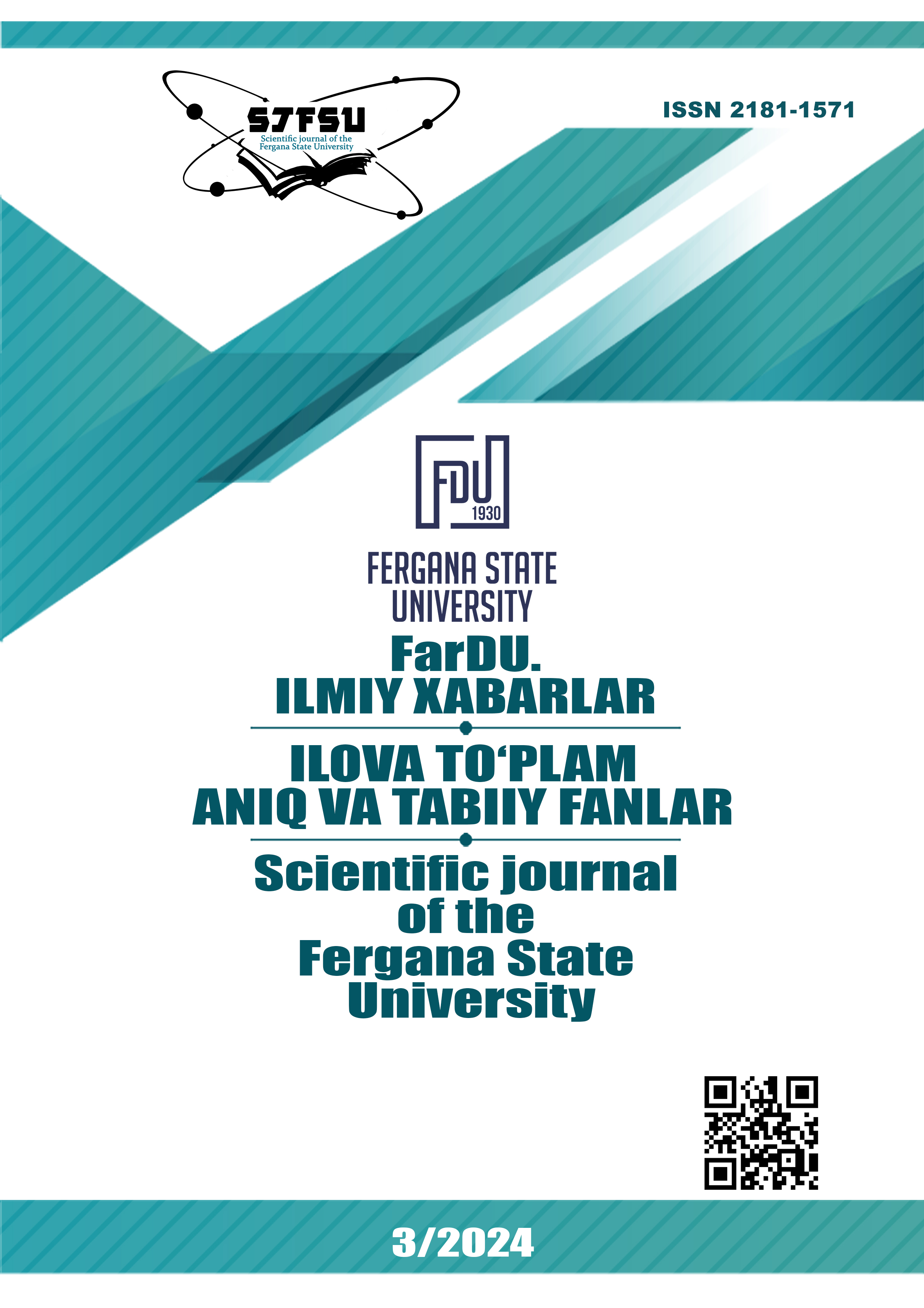INFLUENCE OF DEFORMATION AND IMPURITY INTRODUCTION ON THE FERMI LEVEL AND EFFECTIVE SURFACE CHARGE DENSITY IN BISMUTH-ANTIMONY TELLURIDE FILMS
Keywords:
surface states, interfaces, grain boundaries, polycrystalline films, effective density of states, strain-sensitive films, electronic structure, impurities, defects, Fermi level, charge density, deformation.Abstract
In light of the current trend towards miniaturization of electronic devices and instruments, considerable attention is paid to the study of the properties of thin polycrystalline films of semiconductors, which play a key role in modern electronics. Of particular interest are the interfaces in such structures, which can influence their properties and create new opportunities for the development of devices with unique characteristics. This paper presents methods for studying the role of the effective density of electronic surface states in heterogeneous Bi2Te3-Sb2Te3 films. This research approach aims to gain a deeper understanding of the physical processes occurring in such systems and can contribute to the development of new materials and technologies in the field of nanoelectronics.
References
Гасенкова И.В., Житинская М.К. Перераспределение электронной плотности в Bi2Te3, легированном Sn . //ФТТ, 1999, т.41, в. 11, с.1969-1972.
С.Х.Шамирзаев,Д.А.Юсупова, Э.Д.Мухамедиев Деформационная зависимость эффективной плотности электронных поверхностных состояний в нанокристаллических пленках Bi2Te3-Sb2Te3 // Материалы третьей международной конференции, посвященной 15-летию независимости Узбекистана «Фундаментальные и прикладные вопросы физики» 26-27 сентября 2006 г., Ташкент. С.302-304.
С.Шамирзаев, Д.А.Юсупова Э.Мухамедиев, К.Онаркулов Определение эффективной плотности электронных поверхностных состояний в нанокристаллических пленках Bi2Te3-Sb2Te3 // Физическая инженерия поверхности, 2006. Т.4, №1-2.С. 86-90
Д.А.Юсупова. Исследование влияния деформации на изменения концентрации поверхностных состояний, уровня Ферми и заряда поверхности раздела нанокристаллических пленок теллуридов висмута и сурьмы. // Проблемы современной науки и образования 2019. № 12 (145).Часть 2.Российский импакт-фактор: 1,72 .Научно-методический журнал Москва .2019. .С. 8-12
Юсупова, Д. А., Сирожиддинова, С. З., & Толипов, Ж. (2023, November). ИССЛЕДОВАНИЕ ФИЗИЧЕСКИХ ПРОЦЕССОВ, ПРОТЕКАЮЩИХ В МНОГОКОМПОНЕНТНЫХ СОЕДИНЕНИЯХ ТЕЛЛУРИДОВ ВИСМУТА И СУРЬМЫ. In Fergana state university conference (pp. 71-71).
Юсупова, Д. А. (2023). Эффективные электронные поверхностные состояния в полупроводниках. World of Science, 6(9), 77-81.
Юсупова, Д. А., & Сирожиддинова, С. З. (2021). ИЗУЧЕНИЕ СВОЙСТВ ПОВЕРХНОСТИ И ГЕТЕРОФАЗНОЙ ГРАНИЦЫ РАЗДЕЛА СТРУКТУРЫ НА ОСНОВЕ ТОНКИХ ПОЛИКРИСТАЛЛИЧЕСКИХ ПЛЕНОК ТЕЛЛУРИДОВ ВИСМУТА-СУРЬМЫ.
Юсупова, Д. А. (2022). ИЗУЧЕНИЯ РОЛИ ЭФФЕКТИВНОЙ ПЛОТНОСТИ ЭЛЕКТРОННЫХ ПОВЕРХНОСТНЫХ СОСТОЯНИЙ В НАНОКРИСТАЛЛИЧЕСКИХ ПОЛУПРОВОДНИКОВЫХ ПЛЕНКАХ ПРИ НАЛОЖЕНИИ ЦИКЛИЧЕСКОЙ ДЕФОРМАЦИИ. Involta Ilmiy Jurnali Vol. 1 No.6 , 416-424
Мирзарахимов М.А., Сирожиддинов А.А., Назирқулов Ж.Д. “РЕАЛ ВАҚТ РЕЖИМИДА ТИЗИМДАН МАЛАКАЛИ КАДРЛАРНИ ТАНЛАБ ОЛИШ АЛГОРИТМИНИ НОРАВШАН МАНТИҚ АСОСИДА ТАДҚИҚ ЭТИШ” - Scientific journal of the Fergana State University, 2021
Nazirkulov Jamaldin, Bohodirov Daniyor O'tkirbekovich. PROSPECTS OF APPLYING DATA SCIENCE TO EDUCATION IN THE CONDITIONS OF UZBEKISTAN. Western European Journal of Linguistics and Education 2 (6). 2024. 238-241
Mirzaraximov M.A., Sirojiddinov A.A., Nazirqulov J.D. Study of the algorithm of selection of qualified personnel from the system in real time on the basis of fuzzy logic. Scientific journal of the Fergana State University, 2021(1). Fergana, Publ: Fergana State University, 2021.
Downloads
Published
Issue
Section
License
Copyright (c) 2024 Scientific journal of the Fergana State University

This work is licensed under a Creative Commons Attribution-NonCommercial-NoDerivatives 4.0 International License.

